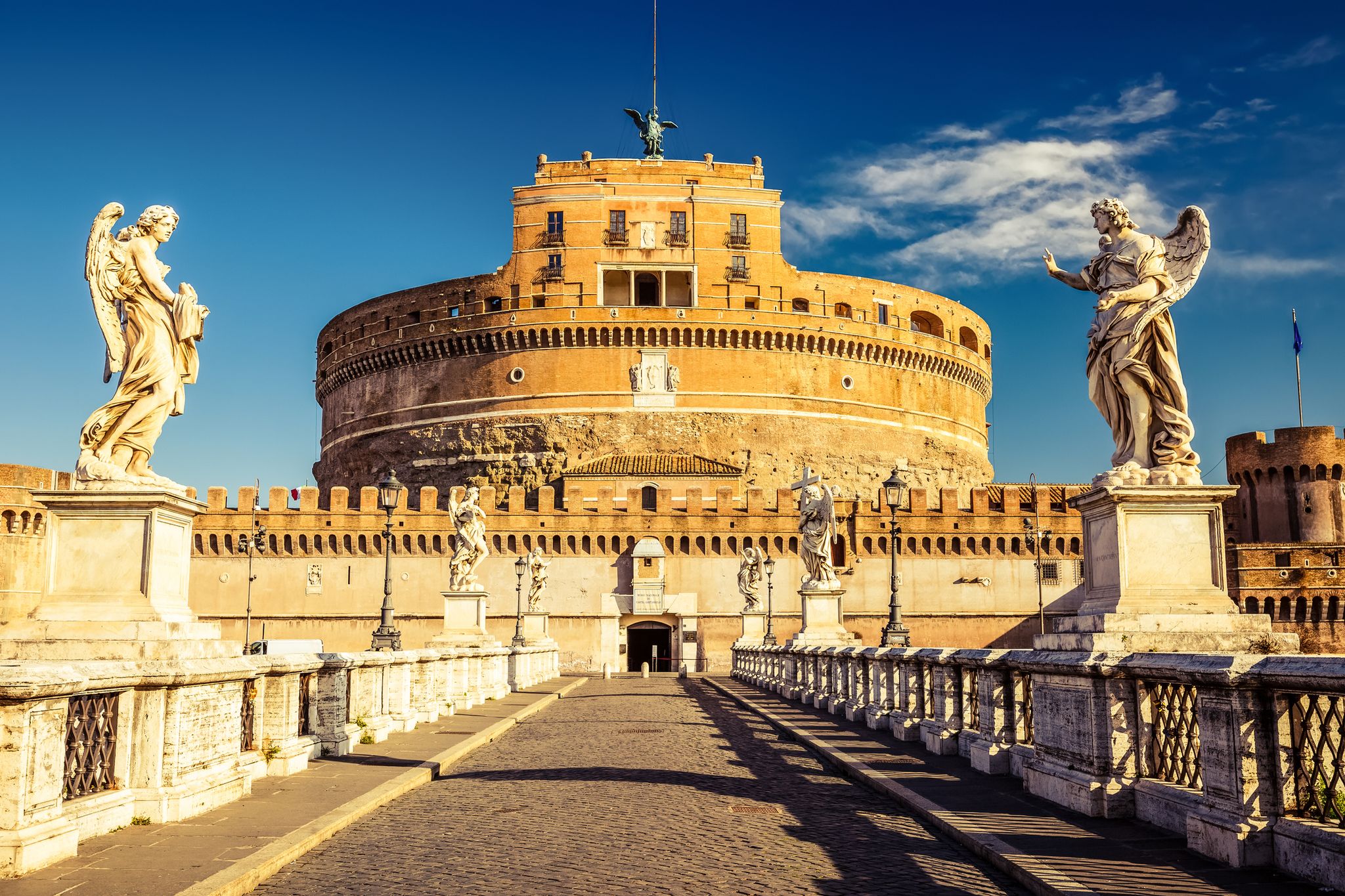Nestled gracefully along the serene banks of the Tiber River in Rome, Italy, Castel Sant’Angelo stands as a timeless testament to the intertwining threads of history, architecture, and cultural heritage. Initially designed as a mausoleum, this iconic edifice has surpassed its original intent, evolving into a symbol of Rome’s lasting influence and legacy.

Castel Sant’Angelo finds its roots in the vision of the Roman Emperor Hadrian, who commissioned the construction of a grand mausoleum to honor himself and his family. Between 134 and 139 AD, this majestic structure took shape, intended to serve as the final resting place for the ashes of the imperial family, a testament to their authority and splendor.
The architectural brilliance of Castel Sant’Angelo reflects the craftsmanship of its era. Its cylindrical form, adorned with travertine marble, exudes a majestic presence befitting the final abode of an emperor. Atop the mausoleum, a golden quadriga—an ancient chariot drawn by four horses—stood as a symbol of Hadrian’s celestial journey.

As the influence of the Roman Empire declined, the role of Castel Sant’Angelo transformed. In the early 5th century, it underwent a shift in purpose, serving as a fortress under the control of the Visigoths and later, the Byzantines. Positioned strategically near the Vatican, its formidable defensive structures rendered it a vital stronghold during periods of turmoil and political instability.

Throughout the Renaissance, Castel Sant’Angelo forged a close bond with the papacy. Popes undertook extensive renovations, converting the edifice into both a residence and a sanctuary. The construction of the elevated passageway known as the Passetto di Borgo further solidified this connection, linking the castle directly to Vatican City. This fortified corridor provided a discreet route for popes to seek refuge within the safety of the castle during times of peril.

The iconic Ponte Sant’Angelo, also known as the Bridge of Angels, serves as a vital link between the castle and the city. Adorned with ten celestial statues sculpted by the Baroque master Gian Lorenzo Bernini, the bridge imparts a heavenly aura to Castel Sant’Angelo. Each angel carries symbolic motifs, enhancing the bridge’s artistic and spiritual allure.
Over time, Castel Sant’Angelo has captivated the imaginations of artists and writers alike. It features prominently in cultural works such as Puccini’s opera “Tosca” and Dan Brown’s novel “Angels and Demons,” adding a layer of intrigue to its storied past.
Despite enduring periods of neglect, Castel Sant’Angelo has undergone extensive restoration efforts to preserve its architectural grandeur. These restoration projects have not only safeguarded the castle’s structural integrity but also provided visitors with the opportunity to delve into its rich history through guided tours and exhibitions.

Today, Castel Sant’Angelo stands as a vibrant museum, welcoming visitors to delve into its diverse history. The museum boasts a remarkable array of artwork, weaponry, and historical relics. From the opulent papal apartments to the panoramic rooftop terrace, visitors have the opportunity to immerse themselves in the rich tapestry of history that the castle encapsulates.
Whether admiring masterpieces of art or exploring the fortified walls, each corner of Castel Sant’Angelo offers a glimpse into its storied past, inviting guests to embark on a journey through time within its ancient walls.

The rooftop terrace of Castel Sant’Angelo offers an unparalleled perspective of Rome, granting visitors a sweeping panorama of the city’s iconic skyline. From the majestic dome of St. Peter’s Basilica to the labyrinthine streets of the historic center, the terrace captures the essence of Rome’s architectural and cultural splendor.
As a symbol of Rome’s enduring spirit, Castel Sant’Angelo stands as a testament to the city’s rich history and evolution across the centuries. From its inception as a mausoleum to its later roles as a fortress, papal residence, and now a museum, the castle reflects Rome’s resilience and adaptability in the face of change.
More than a mere monument, Castel Sant’Angelo is a living embodiment of time’s passage, bearing witness to the rise and fall of empires while safeguarding Rome’s cultural and architectural heritage. As visitors traverse its ancient corridors and ascend to its lofty heights, they embark on a journey through the annals of history, forging a connection with the enduring spirit of a city that has stood the test of time.
Castel Sant’Angelo serves as a bridge between the past and the present, a sentinel overlooking the eternal city of Rome, inviting all who enter to become part of its timeless narrative.

